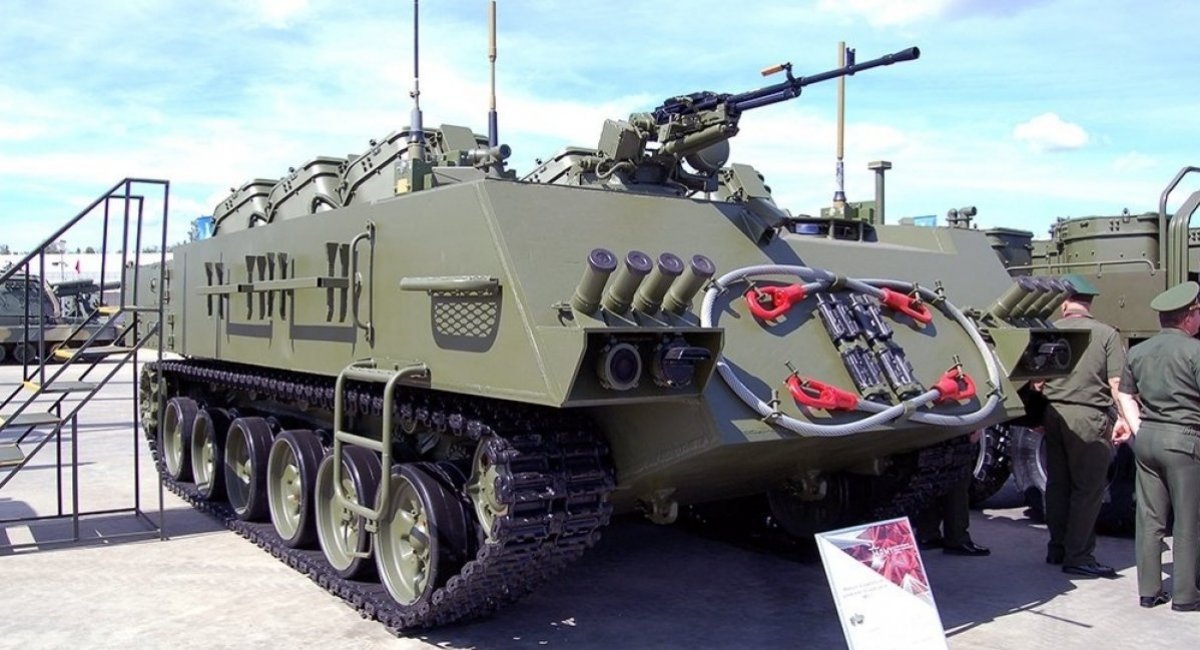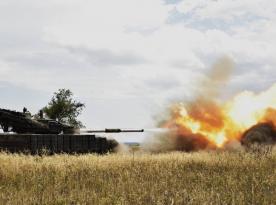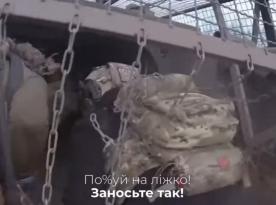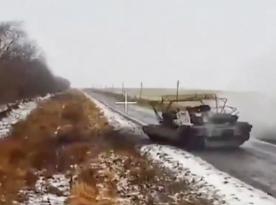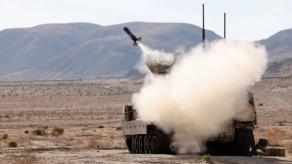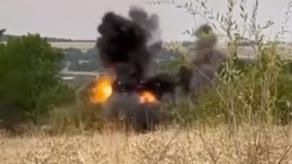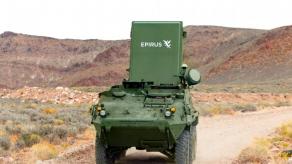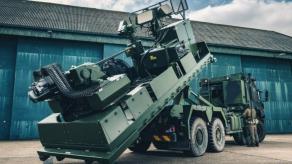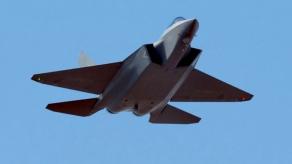Rare combat vehicle on the T-72 tank chassis has been spotted on the move in the Tver Region, northwest of Moscow in russia. Precisely, this unit is called UMZ-G, it's a remote scattered mine laying system which is technically still in the experimental stage of development.
Photographs indicating the relocation of these minelayers were published by the author of the btvt.info blog website, on their Telegram channel.
Read more: What Kind of Engineering Force has russia, That Managed to Create Powerful Fortifications in Ukraine
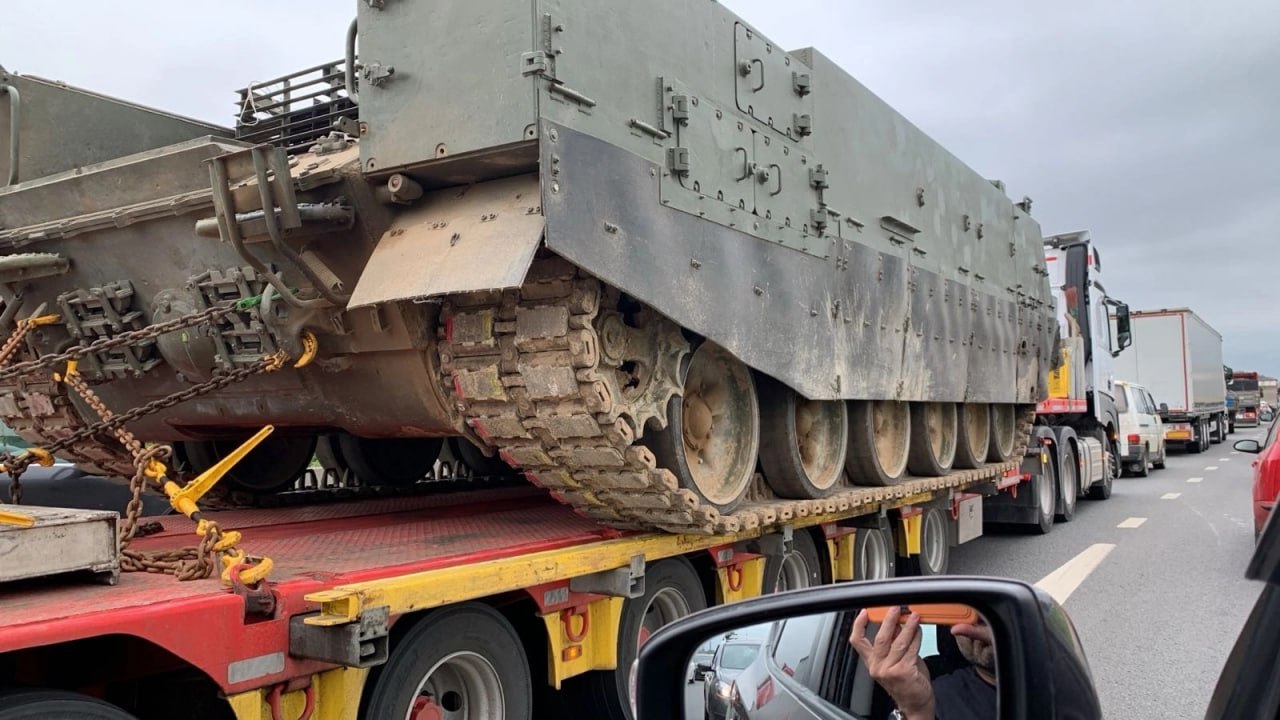
The blogger provides a short description of this vehicle: the design (draft) and development were done by the Omsk Design Bureau, a prototype was demonstrated at a few exhibitions but failed to enter mass production.
Defense Express would like to dive a bit deeper. For that, we need to take a step back. In 2019, during the Armiya-2019 expo, a family of remote minelaying systems was shown that were created within the framework of the Kleshch-G project.
UMZ-G was one of them, it received particular attention as the most heavyweight combat unit in the series with a fully equipped weight of 43,5 tons.
As noted in the fact sheets from back then, the UMZ-G had nine launch tubes with a total capacity of 270 landmines in a single MLRS-like salvo. The type of mines loaded could vary, traps were scattered over an area from a maximum distance of 40 meters. Whilst deploying the mine clusters, the vehicle moved at speeds up to 40 km/h. Other specifications were not disclosed.
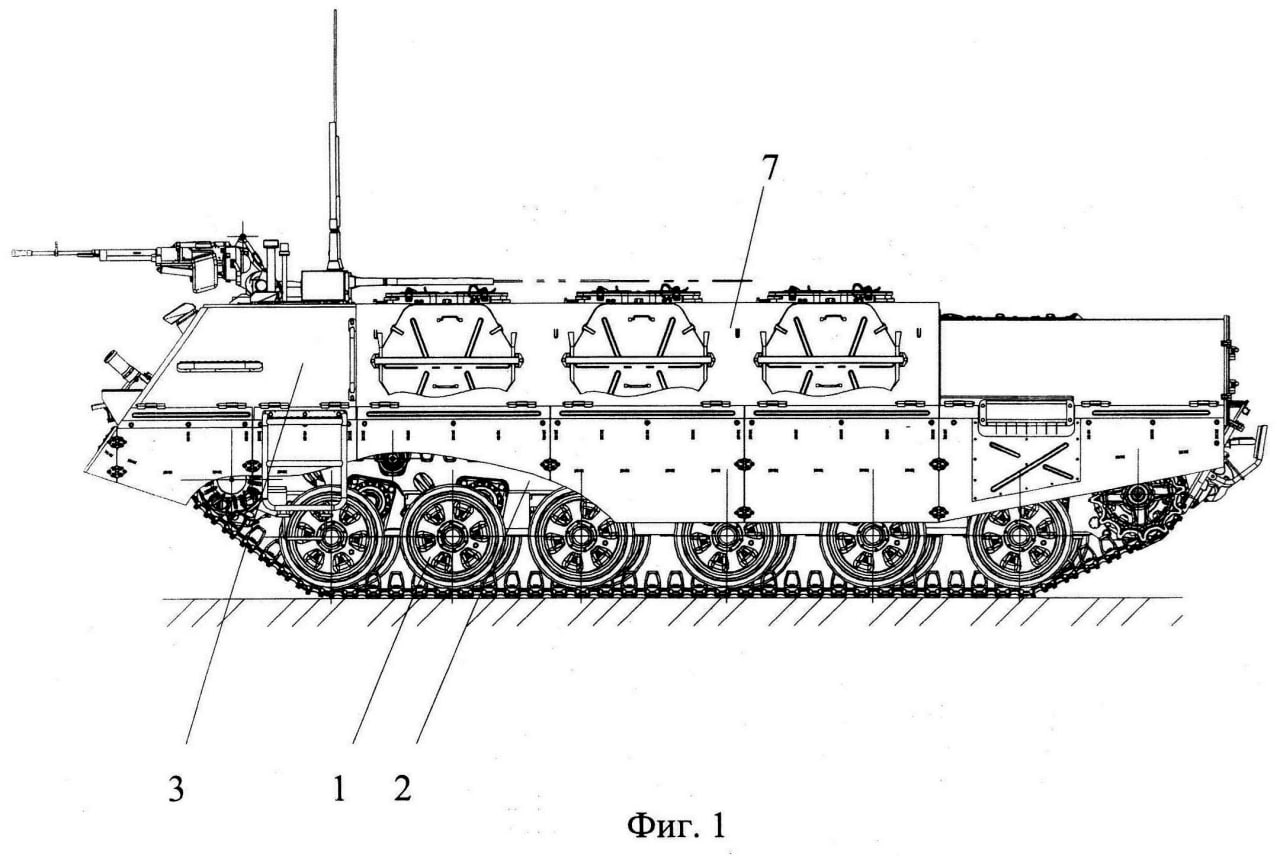
Alongside the UMZ-G, the other members of the Kleshch-G vehicle family were presented: UZM-K, a lighter variant with 180 mines in a salvo, and the Tayfun-VDV with 60 mines in single discharge.
Then, in November 2021 UMZ-G surfaced in the media once again, when it allegedly entered the state testing stage of development, however, the results of those tests were never announced. Since the outbreak of the larger war in Ukraine in 2022, no news about this system appeared either, even though other similar products, no less scarce in the russian military, had already been seen at least a few times in the close rear of russian positions.
One example is the UMZ remote minelayer on the old ZIL-131 truck chassis. The naming similarity is not coincidental: conceptually, UMZ was the predecessor of the Kleshch-G project. In terms of design, though, they are completely different. UMZ in russian means Versatile Mine Barrier Creator, the novel systems of the Kleshch-G family inherited the acronym from UMZ which by that time began to phase out.

Probably, the very fact russian forces started to relocate their UMZ-G system is an indicator that the works on this minelayer had been resumed, considering the growing demand for this sort of equipment on the Ukrainian front.
Earlier Defense Express interviewed a Ukrainian Armed Forces serviceman who explained the importance of remote minelaying systems on the battlefield and noted that with such systems at its disposal, Ukraine could double the losses that russians suffer in their cannon fodder assaults.
Read more: With Remote Minelaying Systems Ukraine Could Double the russian Losses




